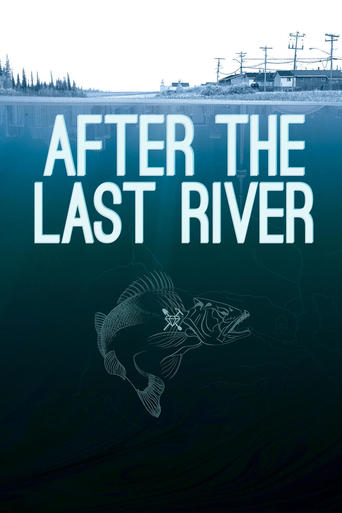



SERIOUSLY. This is what the crap Hollywood still puts out?
View MoreThe film makes a home in your brain and the only cure is to see it again.
View MoreThis is one of the best movies I’ve seen in a very long time. You have to go and see this on the big screen.
View MoreThe story, direction, characters, and writing/dialogue is akin to taking a tranquilizer shot to the neck, but everything else was so well done.
View MoreThis film shows the "missing voices" from mainstream news reporting and stark realities faced by many of our First Nations peoples and communities in Canada. Filmed over a five-year period, it also does a great job of showing the hollow promises and lip-service paid to communities like Attawapiskat by our governments and corporations. This should be required viewing for all Canadians--beginning in middle-school!
View MoreAfter The Last River rewrites "The Myth of Canada". Director and writer Victoria Lean has made a doco that covers a crucial piece of modern Canadian history. By visiting Attawapiskat over several years, she has given a human face to a reserve that continues to hit the headlines. It covers the flaws in the The Indian Act, reserve system, treaty interpretation, corporate partnerships, and how federal and provincial governments fail the citizens they are supposed to support and protect. The Death of Evidence is also a strong theme, as scientists (including the filmmaker's father) are ignored, and science is distorted to suit the suits. It's also the powerful story of a young filmmaker who has her own consciousness raised as she grapples with the realities of life on the Rez: mouldy walls, living in tents in minus 30, and Pampers $60 a packet! This is a telling the TRUTH and making an act of RECONCILIATION; one that leaves us with hope as we see the courage of Chief Teresa Spence, local politicians who really care, and Attawapiskat Youth who love their home and want to tell their stories.
View MoreThis film is an unflinching portrayal of the experience of the community of Attawapiskat through a turbulent period, 2008 to 2013. Against the background of impoverishment, the principal focus of this film is on the effects of the nearby De Beers diamond mine and how it dashed the hopes of the community for betterment. While the mining giant could bring in heavy equipment and functioning water systems the community lived with a school contaminated by seeping diesel fuel, and mouldy, crowded housing, and a river degraded by mercury-run-off from the mine. We can see and hear from community members who struggle to gain comfort from their cultural values and ties that bind them. One young family valiantly seeks some space through erecting a tepee in the dead of winter. The film needs to be widely seen as a lesson in our sordid history of exploiting Native people that should never be repeated. It inspires action.
View MoreI saw the film at Cinefest Sudbury in September 2015, attended by Vicki Lean, and brought the film and Vicki to Belleville Downtown DocFest in March 2016. This film informs and educates in a very powerful way and both screenings totally engaged the audience. The film is masterful in its portrayal of the Attawapiskat First Nations community existing in the shadow of the De Beers diamond mine, the injustices the people there are enduring over housing, water, schools and other basic human rights, the lack of resource sharing by the mine and mounting environmental concerns. It is beyond shocking that this is happening in Canada. The latest crisis and state of emergency being declared over the suicide epidemic in this community, is further proof of this injustice and the lack of support being provided by our government. After the Last River is a must-see for every Canadian.
View More